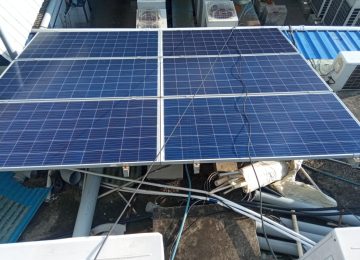The statement of Power Secretary Pankaj Agarwal- India’s peak power demand may surpass the projected 384 GW mark and cross a new level of 400 gigawatts (GW) by 2031-32, didn’t come as a surprise. Each year, India has been recording a spike in power demand.
For example, the peak power demand already reached the 250 GW mark as of 30 May this year.
According to industry experts, the growing economy and rising temperatures will further push the peak power demand in the coming years.
“The way power demand has grown in some states in the last two years, the demand will touch 384 GW and may easily cross 400 GW by 2031-32,” Mr Agarwal said at the CII-Smart Metering Conference.
Can India meet the rising power demand?
One largely unanswered question and the proverbial loose end remains. Is India equipped to meet the growing power demand? This is a serious concern being raised across various forums, and requires careful analysis.
Undoubtedly, the power generation capacity has to double from the current level to meet the peak demand of over 400 GW. Currently, India has a total installed capacity of 444.7 GW. Thermal dominates the pack with 242.9 GW, 193.6 GW of renewables (wind, solar, hydro, biofuel), and 8.1 GW of nuclear capacity.
India has set a target of 500 GW of renewable energy capacity by 2030. In 2023, the government rolled out bids for 50 GW every year to speed up the momentum.
As per a press release from the government (Power and New & Renewable Energy) Minister in December 2023, 132 GW of electricity capacity is under construction, and 517 GW capacity is anticipated to be added by 2031-2032.
Furthermore, the government has stated unequivocally that dependence on coal-based generation is likely to continue until cost-effective energy storage solutions are available. “The country cannot achieve energy security by renewable energy sources alone,” the union ministry said in a press release.
Pegging the power demand:
The demand rise can be pegged to the following reasons:
a) Adding new consumers (December 2023 showed 2.86 crore new consumers)
b) Temperature rise
c) Rapid economic growth
d) e-mobility
e) Industrial growth
The peak demand in FY 2013-14 was 135 GW, which increased to 243 GW in FY 2023-24 (till Nov. 2023). As per the 20th Electric Power Survey (EPS), it is projected to touch 277 GW in FY 2026-27 and 366 GW in FY 2031-32, respectively.
Data:
As per the National Electricity Plan, the installed capacity requirement for the year 2031-32 is likely to be 900.4 GW, comprising 285 GW of fossil capacity (coal & lignite, gas) and 615 GW of non-fossil capacity (nuclear, large hydro, solar, wind, small hydro, biomass, pumped storage projects) along with battery energy storage system or BESS capacity.
The generation planning studies carried out by the Central Electricity Authority (CEA) show that the required coal-based installed capacity will be at 283 GW by FY2032 as against the present installed capacity of 214 GW.
Interestingly, after studying various aspects of renovation & modernization and life extension of coal-based power plants in August 2023, CEA has identified 148 units with a total capacity of 38.2 GW as potential candidates for R&M/LE works.
The authority, in letters dated 20.01.2023 and 07.07.2023, advised thermal power utilities not to retire or repurpose coal-based power stations before 2030 and to ensure thermal unit availability after R&M activities.
Our take:
While measures are being laid to address the rising power and peak power demand, questions are being raised on:
a) the funding requirements
b) the power infrastructure upgradation
c) ensuring uninterrupted power
At this point, I want to reserve my comments as I see more challenges than favourable factors in addressing the peak power demand.










